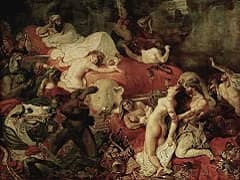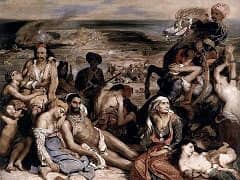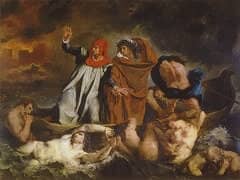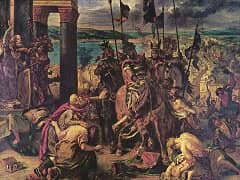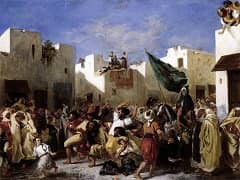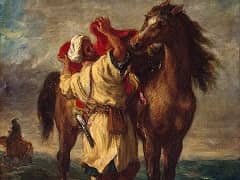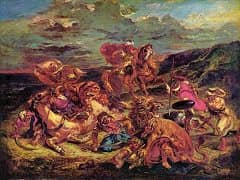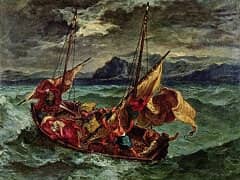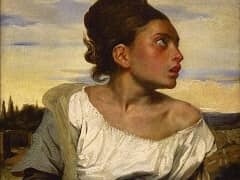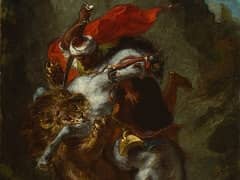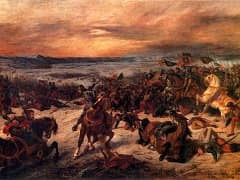The Battle of Taillebourg by Eugene Delacroix
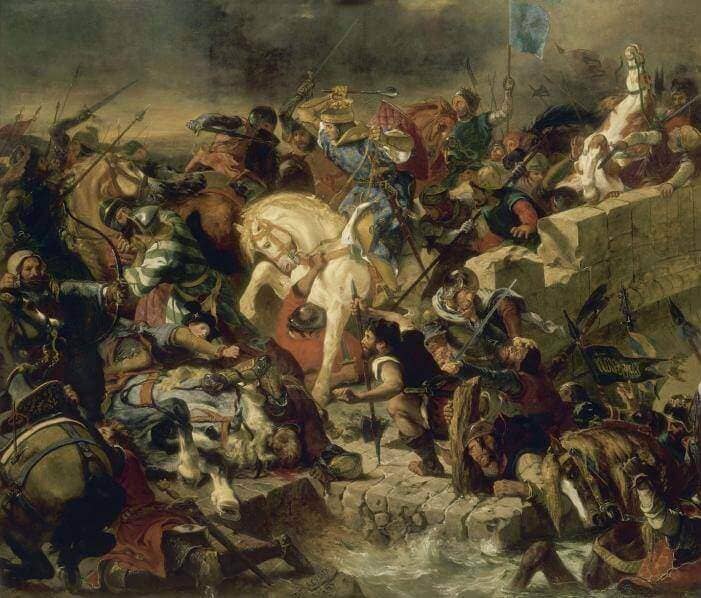
When Louis-Philippe created the Musee de l'Histoire de France at Versailles, two paintings were commissioned from Delacroix: The Battle of Taillebourg and The Entry of the Crusaders into Constantinople. For these vast canvases, Delacroix was obliged to open a studio, and train his own assistants. This time, the critics were completely won over. The derring-do of Louis IX on his white charger riding down the English defences on the Taillebourg bridge and the famous capture of Constantinople (1204) acted as a balm after the terrible defeat of Waterloo. And yet Delacroix's method in these paintings is unchanged; again the implications of the event are focused in a single scene, again he shows the catastrophes of war and the women delivered over to the victors.
Delacroix goal is not to describe the event - though the details are carefully researched and the armour and standards historically correct - but to make the spectator feel its emotional consequences. The inspiration flowing through these 'grandes machines' is no less personal and romantic than it was in The Barque of Dante and The Death of Sardanapalus.


